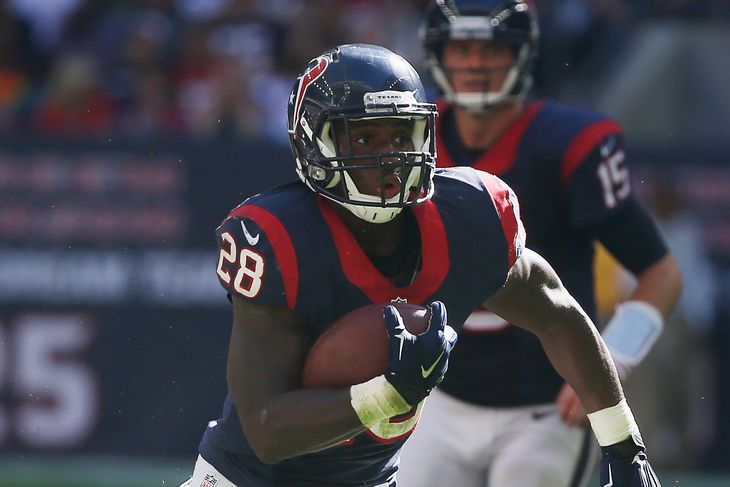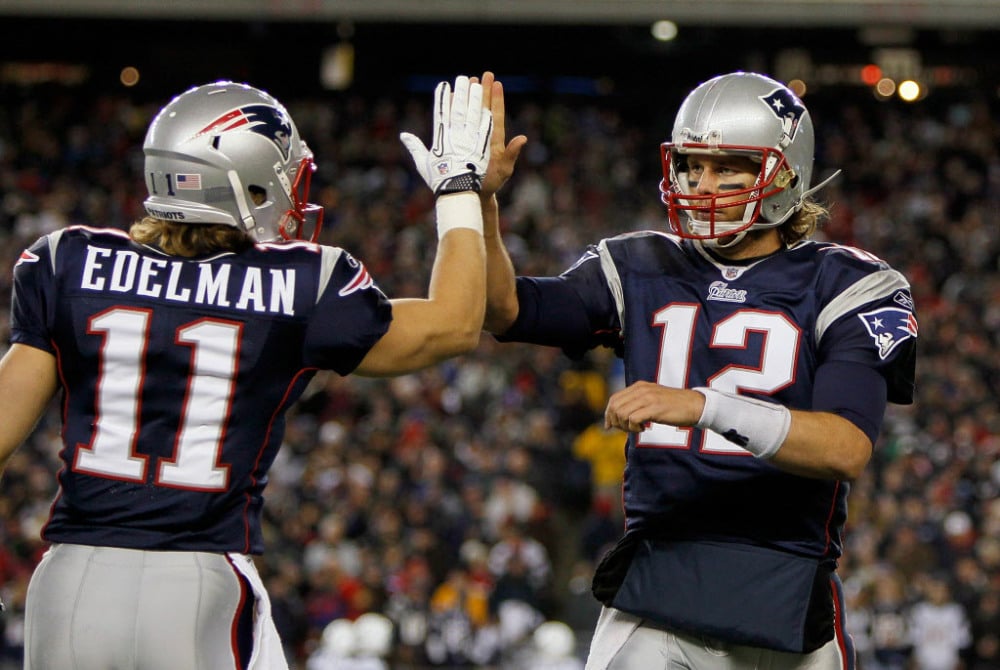I was recently reading Nate Silver’s “The Signal and The Noise,” which is a great book about predictions, and I think it’s really relevant to DFS. In it, he references Gartner’s Hype Cycle, which you can see below.
To simplify, when there is a new innovation or something really groundbreaking, “hype” surrounding this thing soars. Then we get used to this new thing and realize its limitations, that it’s not going to be a cure for everything, and we go through a period of disillusionment. Eventually, expectations even out to a plateau of productivity.
Wow, isn’t this the NFL in a nutshell? I can think of about a million players who have followed this trajectory over the course of a season. With the Hype Cycle in mind, let’s run some Fantasy Labs trends. I’m going to look closely at instances when players have had their salary dramatically rise or fall over the course of a month.
Adding no other filters, QBs whose price rose by $400 or more in DraftKings last year performed 1.14 points below expectation.
The results were similarly poor on FanDuel (Price Change +$600 or more over a month):
Logically, as our expectations for a player increase due to recent performance or some other reason, the price goes up. It gets to a point where our expectations become too high though (at least that’s what’s reflected in Plus/Minus). Then, down into the Trough of Disillusionment – lower expectations, lower price, until things plateau and level out. In the screenshots below, players whose salary decreased by at least $400 on DK or $600 on FD are tracked. You can see how well these players performed.
We see pretty much the same thing happening with the wide receiver position:
| Site | Price Decrease | Price Increase |
| DraftKings | +1.43 | -0.79 |
| FanDuel | +1.15 | -0.56 |
And more of the same at running back:
| Site | Price Decrease | Price Increase |
| DraftKings | +1.18 | -0.26 |
| FanDuel | +0.61 | -0.15 |
As you can see, the overall value added and subtracted in the RB position is lower than the others. I think that’s because there’s more of a true transformation going on when running backs go through big price swings. A lot of the time, it’s because someone just became the starter or lost the starting job. The past results are littered with names like Benny Cunningham, Alfred Blue, and Isaiah Crowell.
This type of thing does happen to QBs and WRs, but I think it’s generally on a much smaller scale. QBs are replaced less frequently than RBs and if a WR goes from benched to starting, there’s still no guarantee he will actually see targets. When someone becomes a starting running back, he will almost certainly see an uptick in carries.
If you’ve ever played season-long fantasy football, you’ve undoubtedly had teams you felt great about one week and hated the next. We’re working with such small sample sizes in the NFL – 16 games per season – with a full week in between games where every last press clip, carry, drop, missed tackle, etc. are scrutinized to death. The NFL is the perfect climate for the Hype Cycle to thrive in – and it does. With tools like Bargain Rating and Price Change, Fantasy Labs gives you a few ways to try and identify when a player’s expectations could be getting a little too high.










